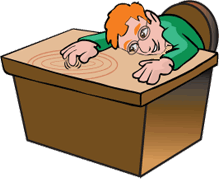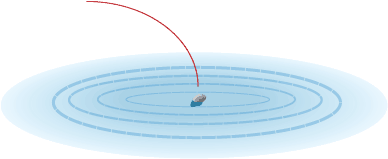Physics at Your Desk: Drumming Fingers
Most of us hear things all the time – the click of the keys on the keyboard, the notes to our favorite songs, cracks of thunder that accompany a storm…but how does sound travel?
What you Need
- Quiet room
- Your finger
- Table or desk
 What to Do
What to Do
- In a quiet room, tap your finger gently on the surface of a desk or table. Pay attention to how loud the noise is.
- Now put your ear down on the desk and continue gently tapping your finger. Your finger should stay about the same distance away from your ear as it was when you tapped the first time. How is the noise different?
What’s Going On?
 Sound is produced when something vibrates. Guitars and pianos produce sound when their strings vibrate. Drums make sound when their drumheads vibrate. And the sound of your favorite singer is produced when his or her vocal cords vibrate.
Sound is produced when something vibrates. Guitars and pianos produce sound when their strings vibrate. Drums make sound when their drumheads vibrate. And the sound of your favorite singer is produced when his or her vocal cords vibrate.
Vibrating strings, drumheads, and vocal cords bump into nearby air molecules and cause them to vibrate too. Then these molecules bump into other molecules close by and cause them to vibrate. In this way the vibrations spread out through space like ripples in a pond, creating sound waves.
Sound doesn't just travel though air; it can travel through solids, liquids, and other gases too. When you tap the desk you cause the molecules in the desk to vibrate and the vibrations travel through the desk like they do through the air.
The molecules in solids are arranged differently than the molecules in gases and most of the time it's easier for sound waves to travel through solids. This means that the waves have more energy when they reach your ears – and more energy means a louder noise.

Try This!
- Repeat this experiment on other surfaces such as metal, plastic, and tile. Which materials can you hear the best through?
- Keep your ear against the table and have a partner tap his or her finger while slowly moving away from you. How far can your partner go before you can't hear the sound anymore?
- You probably made a “telephone” system out of Styrofoam cups and string when you were younger. Based on this experiment, how do you think that telephone system worked?











